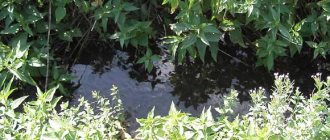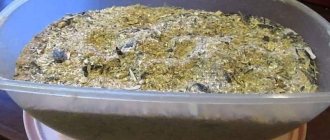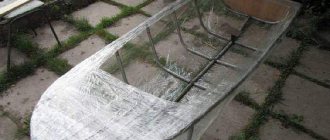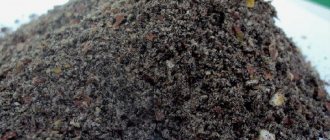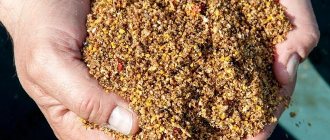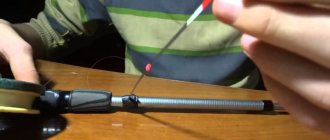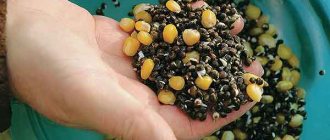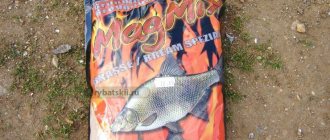Features of artificial bloodworms
Visually, artificial bloodworms are practically no different from living ones. Often, imitation bloodworms have a persistent odor that is as close as possible to the natural one. The artificial bloodworm is made, usually from high-quality flexible silicone, easily fits onto the hook and does not make hooking difficult.
Recently, bloodworms made of silicone with the addition of an attractant appeared on sale. This material is often called “edible rubber.” In addition to the complete external resemblance to live bloodworms, fish are attracted to such a bait by the corresponding taste and smell.
Of course, silicone bloodworms cannot one hundred percent replace live ones, which burst when planted and emit an odor attractive to fish. But in its absence, artificial bloodworms are used for jig fishing or placed on the hook of a winter spinner. And it brings results.
As a rule, fish do not respond to static bait, so it is extremely important to continuously play with a jig with a silicone bloodworm. The more varied the game, the greater the chances of a bite. You should not stop, you just need to alternate smooth movements with sharp and amplitude ones.
Of course, such bloodworms will not be equally successful in fishing everywhere. Despite this, it makes sense to always take it with you so that, if possible, experiment with it on various bodies of water.
Features of fishing for roach and bream on artificial bloodworms
If our goal for fishing with artificial bloodworms is roach and bream, then we must determine the fishing horizon and select suitable flavors. The bream is a typical bottom-dwelling fish. Therefore, it is logical to catch it from the bottom. In winter, it is better to play slowly with frequent pauses. It is better to use anise, coriander and vanilla as a flavoring, or bloodworm scent.
Artificial nozzles are made of porous silicone, which absorbs liquids quite well. If the bite activator is oil-based, then the bloodworms soaked in them will smell for a long time. Practice shows that 2-3 flavored larvae may be enough for one fishing trip.
If we catch roach, it is important to determine the promising horizon. In winter, this fish often fishes in the lower layers, but can also be active in the upper levels of the water horizon. Here you need to slowly but surely raise the jig, loaded with an artificial bloodworm, to the selected length.
It is very useful to add a little dusty bait made from breadcrumbs. Fishing in such a cloudy cloud is very effective. Roachfish actively absorb food elements and sooner or later try the red bait.
Interestingly, larger roaches are caught on artificial bloodworms. For some reason, small specimens ignore this attachment. This is more of a plus than a minus. The fisherman thus selects the fish and catches only the best specimens. For roach, you can use a more active game, since in winter it often demonstrates the habits of a predator.
You should attach bloodworms for catching roach and bream in exactly the same way as when fishing for perch.
ribalka-vsem.ru
Reasons for using artificial bloodworms
- Storing bloodworms is by no means a problem-free task. It quickly disappears in heat and freezes at sub-zero temperatures. The artificial analogue is stored for any time at any temperature;
- after several bites, the fish knocks the bloodworm off the hook, while the silicone bloodworm stays on the hook much longer. You can actually catch several fish with one bloodworm substitute. And replacing natural bloodworms during winter fishing in severe frosts with bare hands is not to the liking of all anglers, and it also takes a lot of time;
- When changing the place of fishing in winter with a live bloodworm attached, it is almost impossible to avoid its freezing into ice. As a result, the bait is replaced. Even if the silicone bloodworm is covered with a layer of ice, you can easily warm it up and continue fishing;
- Every time before fishing you don’t need to look for bait, you just need to buy silicone bloodworms in the required quantity once;
- It is very difficult to place bloodworms correctly on a hook, especially in the cold;
- Artificial bloodworms, unlike natural ones, can withstand the longest casts.
Lucky John Maggot
Date: January 27, 2021 | 526
I continue to review the rich assortment of Lucky John soft baits from the popular manufacturer of various fishing products Salmo. Lucky John has an interesting series of baits that imitate the usual food of fish, live bait - bloodworms, maggots, caviar. And today in the review I want to look at such a silicone bait as Lucky John Maggot , an imitation of large fly larvae.
Form . Well, probably the vast majority of anglers caught fish with a fishing rod using maggots, both in summer and winter. So, most people have an idea of the shape of the larva of a large blue fly. And the form does not require any special description. The larvae are quite plump, round in cross-section, one end is thicker, the other is thinner. There is segmentation, a ringed surface texture.
A rare disgusting thing that grows in carrion and rotting meat. It's not so disgusting in silicone. But this is not the main advantage of Lucky John Maggot.
Class . This silicone maggot is better suited to the imitation class. You can't call it a slug or a worm in its pure form.
What does it imitate ? Fly larva, maggot.
Active or passive . A passive bait, the movement of which must be imparted through the tackle.
Dimensions . Lucky John Maggot tires are available in two sizes: 1.2cm and 1.4cm.
Package . Artificial maggots are sold in plastic jars. They lie there in bulk, thickly coated with attractant, maintaining edibility for a long time.
In jars of 30 pieces and 25 pieces, according to size. There are more smaller maggots, fewer large ones.
Price . A jar of Lucky John Maggot silicone maggots costs about $3. Fairly reasonable price.
Material . Artificial maggots are made from medium soft silicone. The material cannot be called snotty and weak. Rather, he’s even a little tight. So, the maggot stays perfectly on the hook. This edible creature’s body itself doesn’t really need to play; the whole body plays here. So, this approach to the material is completely justified.
Silicone has positive buoyancy, so if you use a small and light hook, you can use this effect and make the bait hang above the bottom.
Colors . Lucky John Maggot is produced in one color - white with a slight yellowish, pearlescent appearance. You can call this color ivory. In general, natural color. This is what maggot is, give or take.
The baits are impregnated with an attractant with a rather interesting smell that the fish will obviously like. The smell is quite persistent. The maggots are very oily and smear heavily. Attractant both on the surface and in the material.
How to mount . You can hook and plant Lucky John Maggot maggots in any way you like. The main thing is to use small thin single hooks. You can plant one maggot at a time, or several at a time.
Artificial maggot Lucky John Maggot is used in a wide variety of gear. You can fish with it using a float rod, winter fishing rod, nanojig, and other types of tackle where you can use live larvae. It is very good to catch rudd using a bombard, using a Lucky John Maggot as a bait.
Purpose . Edible silicone in the form of maggot Lucky John Maggot is suitable for catching absolutely any fish. These are perch, roach, bream, crucian carp, carp, rudd, sabrefish, small chub, medium-sized asp, etc. Almost any peaceful fish can be caught.
Wiring . Various micro movements, vibration. The main thing is to create trembling, vibration, minimal movement. Sometimes, for active fish, very active jumping also works.
Advantages . High realism. Good attraction. The opportunity to catch almost any fish, at different times of the year, in different bodies of water, in different natural areas.
Compared to live maggots, Lucky John Maggot does not spoil or pupate. You don’t need to buy it, dilute it yourself with all sorts of stinking rubbish, and you don’t have to worry about storing it. In the end, there is no need to come into contact with such abomination.
Stays excellent on the hook.
Flaws . The harsh material is the other side of the coin with reliable retention on the hook.
Clones . Other companies also have similar imitations. For example, Berkley. But there can be no talk of any cloning of forms and ideas here - this is a recreation of Nature’s creation.
Conclusions . Lucky John Maggot is a very interesting bait that will become a good alternative when catching various fish in winter and summer, using fishing rods, nanojigs, and bombards.
Share with your friends:
Categories: Lucky John · Tags: Lucky John, Winter, Nanojig, Maggot, Lures, Edible
How to properly attach an artificial bloodworm?
An artificial bloodworm is attached to a hook in the same way as a live one, only in practice it turns out much easier. There are several ways:
- standard;
- Per head;
- by the belt;
- stocking;
- sports.
It is more promising to plant artificial bloodworms in combination with live ones: first, several silicone ones, which hold on for a long time and do not fly off, and then a couple of real ones. In this situation, it is possible to minimize the time when attaching bloodworms.
Often, an imitation bloodworm is placed on a separate hook tied to a fishing line. When playing with a jig, the silicone mosquito larva, moving, also attracts fish.
Bloodworm collection
Collection must be done before the pupation process begins. From the containers, transfer all the contents into a mesh drum for rinsing. The drum is driven by an electric motor, but manual rotation can be used. The sludge comes out during the washing process. The larvae remaining on the surface should be transferred to mesh bags and washed thoroughly under running water. As a rule, per day from 250 sq.m. I manage to collect 3 kg of bloodworms.
Where to buy artificial bloodworms?
Today you can buy imitation bloodworms in almost every specialized store. Basically, silicone bloodworms are of decent quality. In addition, there is plenty to choose from. Artificial bloodworms are available for sale in a variety of scents. Its cost is relatively low. But it is much more accessible in foreign online stores, and the range in them is impressive.
However, you shouldn't go for cheap. It is much better to buy artificial bloodworms of excellent quality, since silicone baits from unknown manufacturers do not always stick well to the hook.
Today, the highest quality imitation bloodworms are produced under the Berkley and Lucky John brands. This bloodworm is sold in jars. Depending on its size, the number of larvae in a jar varies from 100 to 150 pieces. Recently, domestic manufacturers have begun to produce good quality silicone bloodworms, which are sold in bags of several dozen pieces.
Price issue
Artificial bloodworms are made in several ways. And in any case, it will be cheaper than purchased bait. It is worth noting that on the shelves you can find a worthy alternative to live larvae. Some specimens are made of such high quality that even experienced fishermen cannot always distinguish natural bloodworms from fakes by eye. There are even scented baits with different “flavors”. And the price for such a product is appropriate. To make artificial bloodworms, you will need materials that are sold at any hardware store.
Making artificial bloodworms with your own hands
Imitation of bloodworms can be done at home. There are several ways:
- Cut a burgundy balloon into narrow strips. In the absence of live bloodworms, such bait often helps out;
- cut the insulation of the red wire, the thickness of which is from 1.2 to 1.5 mm, into three parts: 5 mm and two 2 mm each. Pull them sequentially onto the hook;
- pour out of silicone using special molds.
Well, in conclusion, I would like to note that, despite the possibility of all-season use of artificial bloodworms, fishing with it is most effective in winter. This is due to the fact that in winter the fish are not as demanding of bait as in the summer.
- How to store bait?
- Wobbler Megabass Flap Slap
- Vibrating tails for pike
- Catching pike with a twister
Advantages and disadvantages of artificial bloodworms
Almost any modern fishing store sells baits that imitate mosquito embryos. In appearance they resemble a natural product, having a similar shape and color. Some manufacturers impregnate silicone products with flavors of hemp, anise, and vanilla. They are easy to store in your fishing tackle box. In winter, this type of non-freezing bait can significantly save the consumption of live larvae. The bait sits on the hooks more firmly than the living ones.
Artificial bloodworms, for all their advantages, are not very popular among fishing enthusiasts. Piece baits often burst when stringing and do not attract fish as actively. It is better to use them as an additional bait. This is usually done in cold weather, when several imitators are first placed on the hook and the sting is covered with maggots.
Experienced fishermen have long known that it is easy to replace live bloodworms not only with store-bought artificial products. The natural bait is successfully replaced by a red thread wound around the tip, or rings of insulation of the same color. An inflatable ball is also suitable for making such an imitation - small pieces of it are attached to hooks.
Artificial maggot
I periodically use artificial maggots (Mag Aligner) not only in carp fishing, but when catching other types of fish. I put several plastic grubs on the hair, thereby creating a classic hook bait. The results of underwater filming surprised me, not for the better, since I did not use very effective equipment.
The problem was that the artificial maggot is buoyant, and when you put it on the shank of the hook, the balance is upset. The hook takes on strange shapes underwater, which can greatly reduce hookability. If you want to disguise the hook with maggots, use the sinking option.
The use of artificial maggots on the forend has a strange effect on the mechanics of the rig. Be careful.
A bunch of maggots can move a small hook.
Using a live maggot on a small hook is also not a good idea. The larvae, wriggling, move with the hook and can lead it into the nearest algae or stone. The chances of this are not that high, but in certain cases it is possible.
